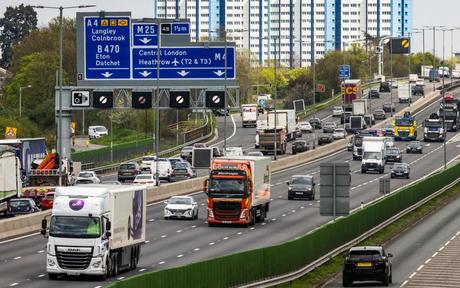
Before June 2019, Claire Mercer had no idea what a smart highway was. Her husband Jason, she thinks, doesn't either. Doubly sad that he was killed by a lorry while stopped without a hard shoulder on a smart stretch of the M1 near Sheffield.
Five years later, Claire from Rotherham is a passionate campaigner for abandoning what she sees as the deadly smart motorway experiment.
After launching the Smart Motorways Kill campaign, Claire says thousands of people have shared their comments, experiences and concerns about the scheme.
The Telegraph is also campaigning to abolish smart motorways, as are motoring organizations AA and RAC. What about a project designed as a low-cost way to increase highway capacity?
Smart highways are abandoned. Kind of...
In April 2023, after 18 years, a cost of more than £3 billion and around 50 avoidable deaths, Prime Minister Rishi Sunak concluded that smart motorways should be abandoned. Or rather, that the Government should suspend plans for fourteen new smart motorways, including parts of the M1, M6 and M25, which had already cost taxpayers £62 million.
The good news is that this will save around £1 billion. The bad news: with the €2 billion we're spending, it looks like we're stuck with the smart highways that have already been built.
"They should be abandoned altogether," Claire told us. "They canceled the ones that haven't been built yet - so they're not hurting anyone - and left behind the ones that kill people. It does not make any sense."
What exactly are smart highways?
The term includes three types of highways. A controlled highway uses cameras that activate a variable speed limit displayed on gantry signs for optimal traffic flow. It maintains a special emergency lane. These form 7.2 percent of the highway network.
The dynamic emergency lane was introduced in 2006 and accounts for 3.3 percent of the motorway network. These roads use the same cameras and variable speed limit signs, but turn the emergency lane into a 'live' roadway during peak hours. Refuges in case your car breaks down are between 0.5 and 2.6 miles apart.
The story continues
In 2014, the hard shoulder of all lanes was permanently converted into an active lane on 8.8 percent of the network. Again, there are refuges for emergencies.
The 'smart' element is that national highway officers use cameras to monitor the lanes. They can adjust speed limits, close a lane and lower the speed limit if there is a breakdown.
Will the existing smart highways really continue unchanged?
Currently, there are about 400 kilometers of smart highways on all lanes. There are no plans to return these to regular lanes with a hard shoulder. This is despite the fact that research by the RAC shows that more than two-thirds of motorists (69 percent) want the emergency lane repaired.
The government claims that providing a shoulder rest would "involve significant costs" and be "too disruptive".
But the RAC's Rod Dennis said: "The concerns people had about a lack of emergency lanes are no different now than they were before the 2023 decision to stop building all-lane highways.
"Our research shows that half of motorists (49 percent) regularly avoid the first lane (the left lane) on all highways because they are afraid of hitting a stationary vehicle. The whole point of them was to increase capacity - which they don't do."
What improvements are being made to existing smart highways?
The government is currently conducting research into smart highways. It's 2020 Smart inventory of highway safety evidence and an action plan cites several statistics indicating that smart highways are just as safe as regular lanes.
Despite this, then-transportation secretary Grant Schapps wanted to make smart highways safer to "restore public confidence." The government then promised £900 million for safety improvements.
These include technology to detect stopped vehicles on any all-lane highway. By 2023, National Highways claimed this was already detecting around 1,900 stopped vehicles per month.
National Highways CEO Nick Harris said: "The latest safety data (2017-2021) continues to show that all three types of smart motorways are safer overall than conventional motorways in terms of deaths or serious injuries."


National Highways added that it is also investing £105 million in all-lane highways, including more variable information signs and a system to detect slow-moving traffic and automatically adjust gantry signs.
But AA chairman Edmund King said: "These are all things they should have done at the start and wouldn't have cost us £900m."
Claire Mercer added: "None of these changes would have saved Jason."
Driving in all lanes is a problem
Running in all lanes without an emergency lane was responsible for Jason Mercer's death. Along with Alexandru Murgeanu, 44-year-old Jason died when a truck crashed into them as they exchanged insurance details on the roadside after a minor bump.
Yet the following year the government decided that all new smart motorways, instead of a dynamic emergency lane, would all run on lanes. Dennis from the RAC said: "They did that without consultation or explanation."
A year later, the Transport Select Committee published a damning report claiming: "The government's decision in March 2020 that all new smart motorways will be single-lane highways was premature."
Even National Highways admits that there is a greater risk of an in-lane collision with a stationary vehicle on smart motorways than on motorways with a permanent hard shoulder.
Emergency areas are the most controversial part of smart highways
When smart highways were first discussed, there were to be emergency shelters for stationary cars every 400 meters. By the time these highways became a reality, the shelters were a mile apart.
Director of policy and standards for the charity IAM RoadSmart Nicholas Lyes said: "It goes without saying that permanently removing a hard shoulder from the motorway increases the risk of a breakdown if you don't reach a refuge."
Edmund King added: "I think this is a fundamental design flaw. And the DfT knew there would be more risks with fewer areas of need. But it saves money. We said at the time that this would lead to deaths."
To prove King's point, National Highways revealed in December last year that it was going to spend £390 million adding 150 extra emergency stopping points across 11 stretches of motorway.
But Mercer countered, "What good is a sanctuary for emergency responders? Jason's accident happened at 8:12 am. His body was still on the side of the road at 5pm because the traffic was so bad that the coroner could not get through without an emergency lane.
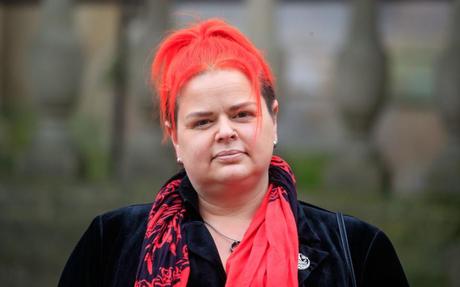
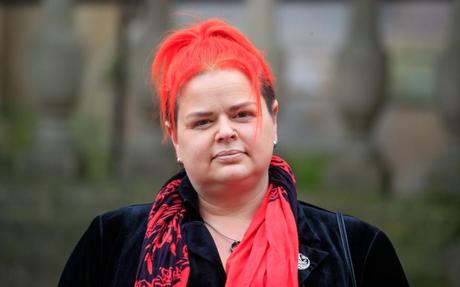
The technology doesn't always work either
Relying on technology to track broken down cars is great in theory. But if that technology doesn't work, chaos ensues.
A whistleblower announced this The Telegraph that on January 19 this year, the computer safety system of the smart highway was disabled across the country. This meant that control room staff could not use the CCTV cameras, check speed limits or close lanes.
The result was a six-car pile-up on the southbound M6 when a car veered into the inside lane of an all-lane section. Those involved escaped with minor injuries. "Luckily God was watching over them, because we certainly weren't," the whistleblower said.
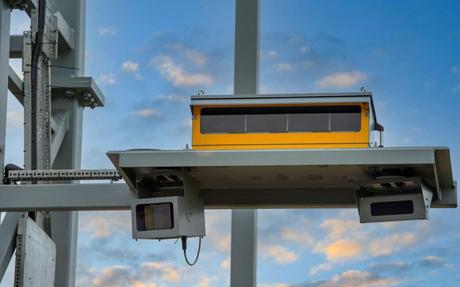
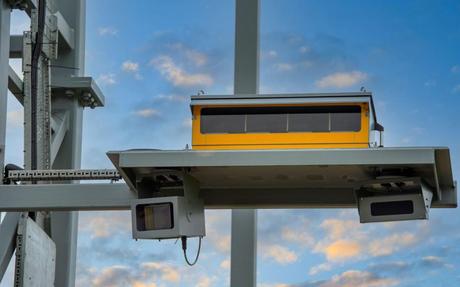
Monitoring agency the Office of Rail and Road says 89 per cent of stopped vehicles are now detected, although Yorkshire and the North East are still below the 80 per cent target at 76 per cent.
It's an improvement from 2022, when smart technology failed to detect a third of broken down vehicles. Yet one in ten drivers is still alone.
What is the future for smart highways?
We are now stuck with multiple schedules. Rod Dennis of the RAC said: "It's a total mixed bag. On the M6 it goes from a normal three-lane run to a dynamic hard shoulder to running in all lanes. It's so confusing for drivers."
The AA agrees with the RAC that smart motorways should be abandoned as quickly as possible. Edmund King said: "They were able to switch from all lanes to a dynamic emergency lane with relative ease. Then adjust the criteria so that the hard shoulder is only used if the average speed decreases sharply due to heavy traffic."
Although the current government is sticking with smart highways, it is believed the party will abandon it if Labor wins the election. Labor MP for Rotherham Sarah Champion claimed highway rescues were like "falling into a death trap".
Labour's transport secretary, Louise Haigh, also wants the hard shoulders restored. She said: "We know that smart motorways, combined with inadequate safety systems, are not fit for purpose and put lives at risk."
All drivers must keep their fingers crossed that Labor sticks to that line if it wins.
What should you do if you break down on a smart highway?
Let's put aside the questionable taste of an advertising campaign featuring men dressed as flies, when the latter is what has happened to some of the deaths on smart highways so far. The message it was trying to convey was that motorists should keep left in the event of an emergency or breakdown on a motorway without a hard shoulder.
They must then either turn at the next intersection or service, or go to an emergency area. But what if you can't reach one of the shelters?
The government advice is to move the vehicle as close as possible to the left verge, border or driveway. If you feel safe, exit the vehicle through the left door and wait behind the security barrier. Then call 999.
If the car stops unexpectedly in a lane, drivers are advised to turn on their hazard lights and fasten their seat belts. The advisory then says National Highways will close the lane and send assistance.
RecommendedSmart highways and roadworks are bringing traffic to its slowest speed in a decade
read more
